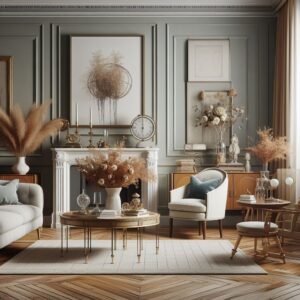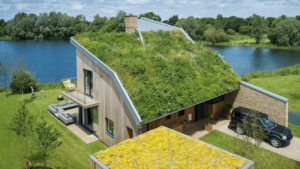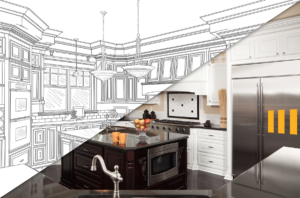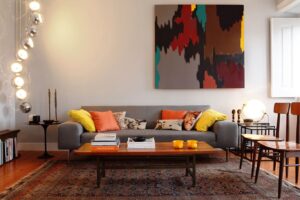The Psychology of Color in Interior Design: Creating the Right Mood
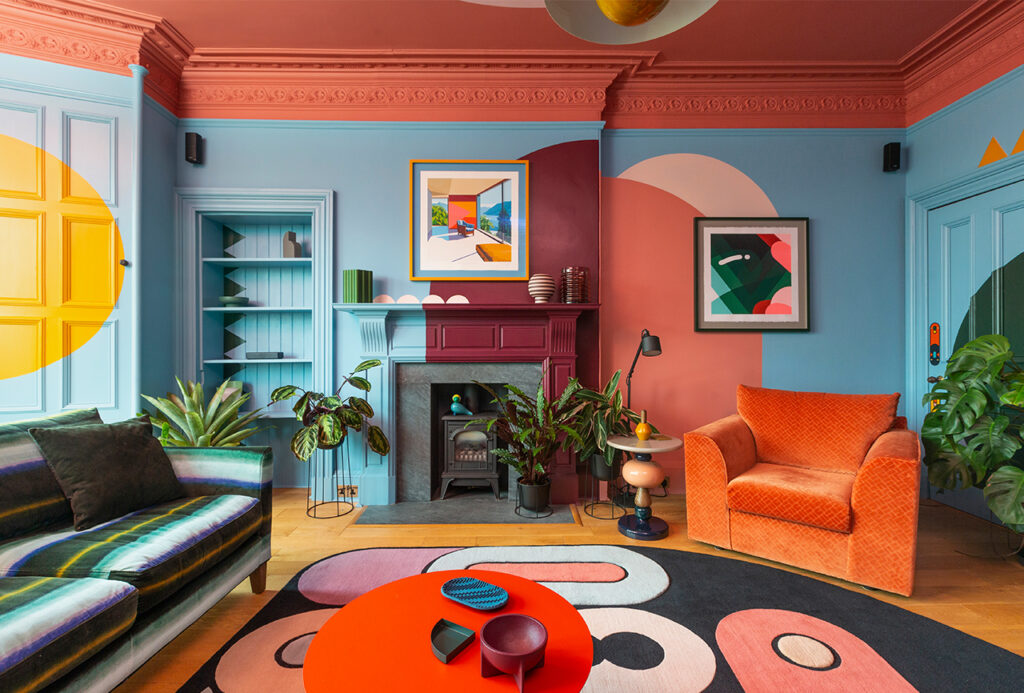
Color is a powerful tool in interior design, capable of influencing our emotions, perceptions, and behaviors. In this article, we will delve into the psychology of color and explore how different hues can be strategically used to create the desired mood in your living spaces. By understanding the psychological impact of colors, you can transform your home into a place that not only looks beautiful but also feels just right. The most professional web design company in Toronto remarks how the choice of color and its psychology is very important for their line of work.
Color has a profound impact on our psychological and emotional state. Whether you want to create a serene, invigorating, or cozy atmosphere, your choice of colors can make all the difference. Let’s explore the world of colors and how you can harness their psychological properties to enhance your interior design.
The Impact of Warm Colors

Warm colors, such as red, orange, and yellow, are known for their ability to evoke strong emotions and create a sense of warmth and energy. When used in interior design, these colors can add vibrancy and excitement to a space. For instance, a dining room painted in rich, warm red tones can stimulate appetite and encourage lively conversations. Similarly, an office with orange accents can promote creativity and enthusiasm among its occupants.
However, it’s important to use warm colors judiciously. Overuse or excessive intensity can lead to feelings of agitation or overwhelm. To strike the right balance, consider incorporating warm colors in accent pieces, such as throw pillows, artwork, or furnishings, while keeping the main walls in cooler tones for balance and harmony.
The Serenity of Cool Colors
Cool colors, including blue, green, and purple, have a calming and soothing effect. They are often used in bedrooms, bathrooms, and other areas where relaxation and tranquility are desired. Blue, in particular, is associated with a sense of calm and is known to lower blood pressure and reduce stress levels. It’s an ideal choice for creating a serene and peaceful bedroom retreat. If you wish to incorporate some moody colors for your next clothing purchase, you can find some really amazing ladies t-shirts in the most vibrant of colors!
Green, on the other hand, represents nature and growth. Incorporating various shades of green in your interior design can bring the outdoors inside, fostering a sense of harmony and balance. Similarly, purple is often linked to luxury and creativity, making it a great choice for adding a touch of elegance to your living spaces.
The Neutral Palette
Neutral colors, such as white, beige, and gray, provide a versatile canvas for interior design. They offer a sense of simplicity and timelessness, allowing you to layer on accents and textures to achieve various moods. White, for instance, symbolizes purity and cleanliness, making it a popular choice for kitchens and bathrooms. Beige, with its warm undertones, creates a sense of comfort and can be a great backdrop for living rooms. Gray, in its various shades, is a versatile choice that complements virtually any color, allowing you to experiment with different palettes. If you want to learn more about this palette you can enroll in Fashion Courses.
Accent Colors and Their Impact
When it comes to creating a cohesive and balanced interior design, accent colors play a vital role. These are the pops of color that can breathe life into a room. Accent colors are typically used sparingly, but their impact is significant. They can draw attention to specific areas, create focal points, and add a touch of personality to your space.
Consider using accent colors in accessories, such as throw blankets, decorative pillows, and artwork. For example, if you have a predominantly neutral living room, adding vibrant accent pillows in shades of turquoise or coral can instantly inject energy and interest into the space.
If you want to create a website dedicated to colors you should find the best hosting provider for it.
Harnessing the Power of Color Combinations
While individual colors have their psychological properties, the combinations of colors can create a more complex impact. Complementary colors, those opposite each other on the color wheel, create a dynamic and energetic contrast. For example, red and green, when used in the right proportions, can create a vibrant and visually striking environment.
On the other hand, analogous color schemes, which consist of colors next to each other on the color wheel, create a harmonious and calming effect. For instance, a bedroom with varying shades of blue and green can evoke a sense of serenity and relaxation.
If you want to sell your business so you can buy a beautiful home you should contact one of the m&a advisory firms.
Personal Preferences and Cultural Influences
It’s essential to remember that the psychological impact of colors can vary from person to person and culture to culture. Individual preferences and cultural backgrounds play a significant role in how colors are perceived. What may be a soothing blue to one person may remind another of a stressful experience. Incorporating these colorful unicorn tapestries in your room can definitely impact your life for the better as putting in some happier and brighter colors will positively affect your mood every single day!
When designing your interior spaces, consider your own preferences and those of your household members. Additionally, take into account the cultural significance of certain colors. For example, while white is associated with purity and innocence in Western cultures, it symbolizes mourning in some Asian cultures.
Lighting and Color
Lighting is another crucial factor that can influence how colors appear in a space. Natural daylight, incandescent, fluorescent, and LED lighting all have different color temperatures that can affect the perceived colors in a room. For instance, warm incandescent lighting can make warm colors appear even warmer, while cooler LED lighting can make cool colors seem more intense.
It’s important to test paint and fabric samples under the lighting conditions in your home to ensure the colors achieve the desired effect. Proper lighting design can enhance the mood you intend to create in your space.
The Role of Color in Productivity
Beyond aesthetics and emotional impact, color also plays a significant role in influencing productivity and cognitive function. In workspaces and home offices, choosing the right colors can enhance focus, creativity, and efficiency.
Yellow for Creativity: The color yellow is often associated with creativity and innovation. If you have a home office or creative workspace, incorporating yellow accents or using it as a primary color can stimulate creative thinking and problem-solving. Yellow is known for boosting enthusiasm and optimism, making it an excellent choice for those who want to infuse their work environment with a dose of positivity.
Blue for Focus: Blue, as mentioned earlier, is a calming color, but it also has the power to improve concentration and productivity. This is why you’ll often find blue used in corporate office spaces. A light to mid-tone blue can promote a sense of serenity, helping you stay on task without distractions. If your job requires a lot of mental focus, consider introducing blue elements into your workspace.
Green for Balance: Green is a color that strikes a balance between calm and energy. It is often linked to growth and renewal. In a workspace, green can reduce eye strain and create a sense of tranquility. Indoor plants, painted green walls, or green accents can add a touch of nature to your workspace, making it a more inviting and productive environment.
Colors for Different Rooms

Each room in your home has its unique purpose, and the psychology of color can guide you in making the right choices for each space.
Kitchen: The kitchen is often the heart of the home, where families gather and meals are prepared. To stimulate the appetite and create a welcoming atmosphere, warm colors like red, orange, or yellow are excellent choices. You can use these colors in the kitchen decor, such as tableware, curtains, or backsplash tiles. If you like preparing fish in your kitchen be sure to use a fishing app for all the best recipes.
Bedroom: In the bedroom, where relaxation is paramount, cool colors like blue and green are ideal. These colors promote restful sleep and a sense of tranquility. To add warmth, you can introduce soft, neutral tones or subtle pastels. If you need to drive around the city to find perfect colors for your bedroom you can do it in style by using a Denver limousine.
Living Room: The living room is a versatile space where you can entertain guests, relax, or watch television. To create a comfortable and inviting ambiance, consider warm neutrals and accent colors that reflect your personality. Balance is key here; you can use warmer colors in decorative items and textiles while keeping the main walls in calming neutrals.
Bathroom: Bathrooms benefit from a clean, fresh look. White is a popular choice for bathrooms because it symbolizes cleanliness and purity. However, you can introduce spa-like serenity with cool blues and greens, creating a soothing environment for self-care and relaxation.
Be careful about cheap paint because it is of low quality and it can cause irritation on sensitive skin. If that happens to you you should contact Cheyanne Mallas PA.
Seasonal Color Transformations
Another exciting aspect of interior design is the ability to adapt your home’s color scheme to the changing seasons. Seasonal color transformations can keep your space feeling fresh and in tune with the time of year. Rooms at the IV hydration therapy are all incorporating variations of blue to comfort the patients.
Spring: As nature awakens in spring, consider refreshing your interior with pastel colors like pale pinks, soft blues, and mint greens. These colors evoke the freshness and vibrancy of the season.
Summer: Summer is all about warmth and vibrancy. Introduce bold and bright colors like sun-kissed yellows, ocean blues, and tropical greens. You can achieve this with summer-themed decorations, such as throw pillows, floral arrangements, and outdoor furniture. Summer is also a time of the year ideal for eating the best ice cream in Scottsdale AZ!
Autumn: As the leaves change and the air cools, bring the warmth of autumn indoors. Earthy tones like deep reds, burnt oranges, and rich browns can create a cozy and inviting atmosphere. Consider using these colors in your home decor, such as throws and area rugs.
Winter: Winter calls for a sense of coziness and comfort. Warm neutrals, such as soft grays, creamy whites, and rich chocolates, can make your home feel like a winter retreat. Additionally, you can add metallic accents like silver and gold to create a touch of holiday glamour.
You can also color the exterior of your home including the roof. For that, you can use roofing services in Pennsylvania.
The Art of Color Mixing

While we’ve discussed the psychological impact of individual colors, the magic often happens when you mix and match colors thoughtfully. Color schemes, whether complementary, analogous, or monochromatic, can transform a space into a work of art. Did you know that you can see colors more enhanced if you ingest these great extra strong cookie dough edibles?
Complementary Colors: Combining colors that are opposite each other on the color wheel, such as red and green or blue and orange, creates a striking and dynamic contrast. When used in the right proportions, complementary colors can make a room visually exciting and lively.
Analogous Colors: Analogous color schemes consist of colors that are next to each other on the color wheel. These combinations create a sense of harmony and flow. For instance, using various shades of blue and green can evoke a serene and balanced atmosphere. These colors are often found in the makeup for nurses.
Monochromatic Colors: A monochromatic color scheme involves using different shades and tones of a single color. This approach can create a sophisticated and cohesive look. For example, a room decorated in various shades of blue, from light turquoise to deep navy, can feel both calming and visually interesting.
You can buy really cheap paint in Belgrade and if you need a vehicle to drive around the city you can rent one from rent a car Beograd.
Customizing Your Color Palette
Your home should reflect your unique personality and style. While color psychology provides valuable insights, your personal preferences are equally important. The key to successful interior design is finding a balance between psychological impact and personal taste.
There is an amazing store in Atlanta where you can create your own color palette. If you need a car to drive around the city you can rent a vehicle from limo rental in Atlanta.
Start by considering the mood and atmosphere you want to create in each room. Then, experiment with color samples, textiles, and decor items to find the perfect color palette that resonates with you. Don’t be afraid to mix and match different colors to create a space that feels both psychologically harmonious and authentically you.
The Future of Color in Interior Design
As technology advances, so too does the world of interior design. With the rise of smart homes and innovative materials, the way we use color in our living spaces is evolving. In the near future, we can expect to see exciting developments in how color is integrated into our homes.
Smart Lighting: Smart lighting systems allow homeowners to customize the color temperature and intensity of light in each room. This means you can easily change the mood of your space by adjusting the lighting, making color even more dynamic in interior design.
Virtual Reality (VR) Design: With VR technology, interior designers and homeowners can virtually walk through spaces before making real-world color and decor decisions. This will help in visualizing the impact of colors in three dimensions, making it easier to choose the perfect palette. Visual communications are the key to choosing a perfect color palette.
Sustainable Color Choices: As environmental awareness continues to grow, the use of sustainable and eco-friendly paint and material options is becoming more prevalent. Choosing colors with low VOC (volatile organic compound) paints and recycled materials will be a significant focus in interior design.
If you want to buy a new house and renovate it from scratch you can then sell your home for cash in Lehigh Valley.
In conclusion, the psychology of color in interior design goes beyond aesthetics; it influences our emotions, productivity, and well-being. By understanding the psychological impact of colors, you can create living spaces that not only look beautiful but also feel right for you. Whether you want to evoke a sense of calm, energy, or creativity, color is a powerful tool that can transform your home into a reflection of your personality and the mood you wish to create. Embrace the art of color mixing, consider seasonal transformations, and stay open to the future of color in interior design as it continues to evolve. Your home is your canvas—paint it with the colors that speak to you and make it uniquely yours.
